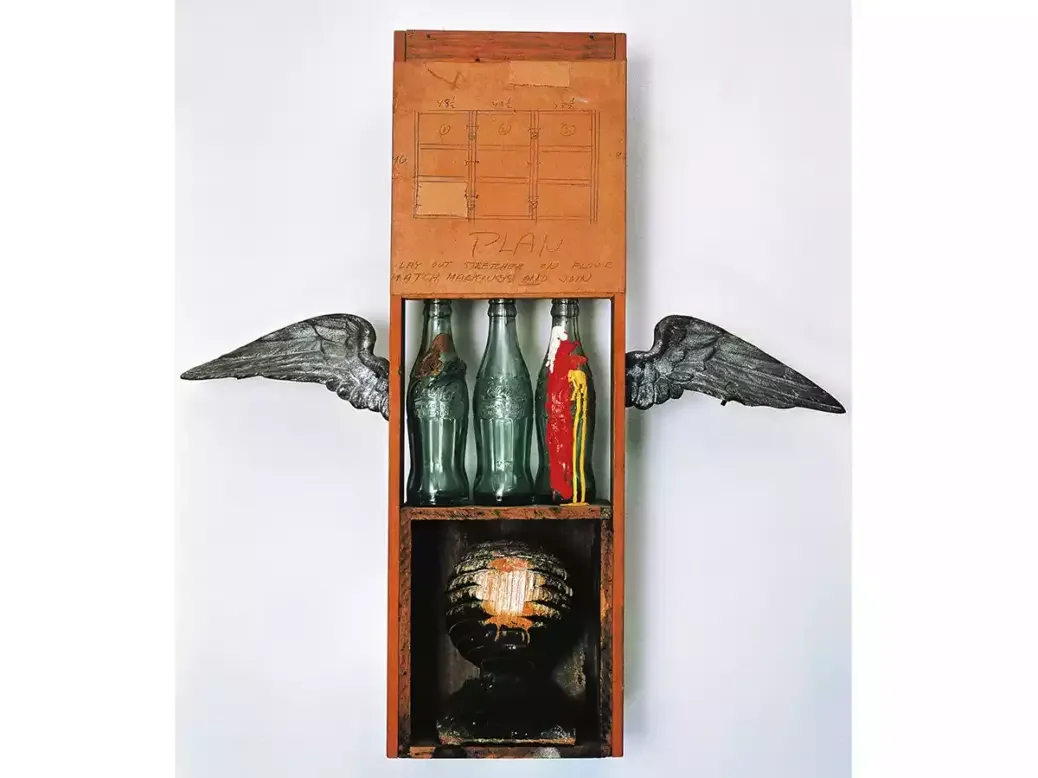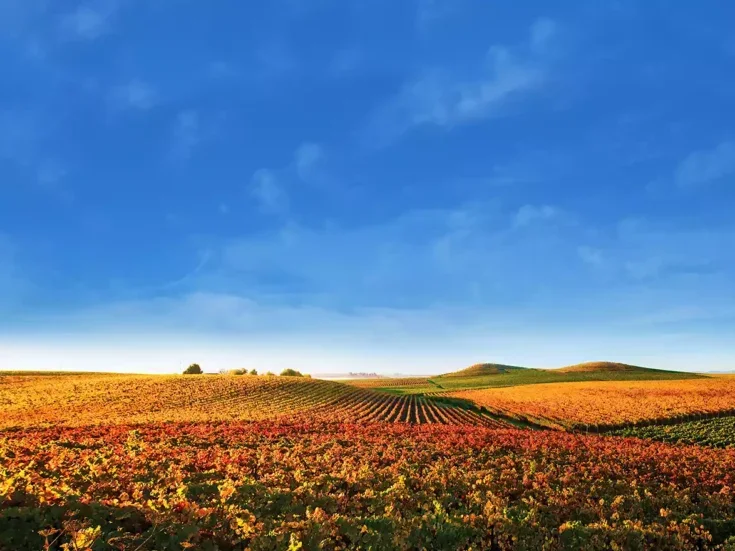
As wine leaves behind its modernist and postmodernist eras, a survivor from Colares reminds Hugh Johnson of what wine does best.
I am not the only critic who has claimed for wine (or at least certain wines) the status of art. Nor is it much of a claim these days, when you see how much rubbish claims the name. There is a criterion for art, though, that could balk at the entry of wine and its makers into Parnassus. Art is now required to be disturbing, unsettling, to change your view of the world. I wouldn’t want a wine that did that. Nor do the critics of wine often lay out their stall in terms of movements or periods. Or indeed influences. Perhaps they should.
Edward Docx is a novelist I shall soon get around to reading—especially since his article “Postmodernism Is Dead” in Prospect. In his analysis, while modernism focused on design, hierarchy, and the powerful expression of a decided idea or view of life, postmodernism did the opposite. It deconstructed and gave equal status to the rational and the irrational, the real and the phoney, and aimed to destabilize ideas of identity and progress. In Docx’s words, it “sought to strip privilege from any one ethos and to deny the consensus of taste.” And the most postmodern thing of all? The Internet, in which everybody’s view is of equal value: Expertise is drowned in the hubbub of instant opinions.
Are you seeing a relationship with wine here? Is postmodernism dead in the wine world, too? We have had our modernist period: wine conforming to a universal standard set, as it were, by authority. Ripeness is (and this is Parker telling us, not Edgar speaking to Gloucester) all—or was. Postmodernism? I have tasted one or two pretty deconstructed wines. One or two where the real and the phoney have become confused. And if irony is a big part of postmodernism, we see plenty of that—if not on the palate, certainly in the price.
Is Damien Hirst postmodernist, or are his pickled animals simply cynicist? Edward Docx is an optimist. He thinks the world of art is emerging from its postmodernist chaos into a place where authenticity is what matters. “We want,” he writes, “to become reacquainted with the spellbinding narrative of expertise.”
Now this rings a bell. Authenticism is where good wine has always been; expressing a real place and time, interpreted by a real person who takes total responsibility—that is what wine does uniquely well, of all products. Is it art? Who cares? It can certainly make the heart skip a beat.
Colares: A spirit-moving survivor of a wine from sand
This is what happened when I opened an ancient bottle of Colares, of all things, recently. Colares is a seaside town west of Lisbon, with totally bizarre vineyards—on the beach. If ever you will find a sense of place in a wine, it should be here. The vines (Ramisco; you won’t find them everywhere) are planted deep in the seaside sand on a low cliff. Ten-foot-long cuttings (whole branches, rather) are set in the underlying clay in a ten-foot (3m) trench that is gradually filled in as the vines grow. Phylloxera is baffled; it can’t move in sand.
But Colares is not just a last-ditch retreat from phylloxera. Its wine has been rated for centuries—since 1255, to be precise. In his Topographie de Tous les Vignobles Connus (1816), André Jullien scores it as giving Portugal’s best “ordinary” (by which he means table) wine. In 1833, Cyrus Redding, his English opposite number, mistakenly credits Colares with producing Port. The Texan scholar Dan Stanislawski—in his 1970 study of Portugal, Landscapes of Bacchus—calls Colares “perhaps the best wine of Portugal.” The latest news, though, is not so good. The Oxford Companion to Wine (5th edition, 2023) reports a mere few hectares living on charity.
The bottle I opened was my last from a visit I made in 1975. (Relics like this are a bonus of a settled life and having the same cellar for 40 years.) My tasting note justifies, I hope, detaining you with a wine you are unlikely ever to taste:
Colares, Real Vinicola 1973. Completely perished cork, not even tight in the neck. Color dark brown, scarcely red even in the center. Nose: amazing; Madeira and incense. It must be totally oxidized, but so gradually the tannins could handle it. Like truly ancient claret, clean and lithe, but denser, as in a very ripe vintage. As good as the best Médoc. Incredible; I wish Broadbent were here. The endless finish is still cooling and enriching my palate ten minutes later. It moves my spirit to drink such a survivor.
How many vineyards are there in Europe, planted in remote ages, their strains of vines selected and refined over centuries, their style of wine sanctified by time, their survival through phylloxera a matter of sheer luck, their futures now sunk to a struggle for existence?
Colares is one, but think of Italy and how many remnants of vineyards it contains where the germ of a distinct identity is still alive. This is where I instinctively look for authenticity—but then I have the instincts of a historian. When I visit a town for the first time, I look for its remaining old buildings to learn what it is “really” like. You can argue equally well that the only true authenticity lies in the present and the future. History is only what we happen to know, or have been able to find out, about affairs that were probably very different from our perception of them. Am I just a sucker for the patina of age?
A sense of an unknown place
So, have any new wines given me a jump? Yes, Brian Croser’s Pinot Noir from near Adelaide, for one. I served it blind, Tapanappa Foggy Hill Pinot Noir from the Fleurieu Peninsula, to a roomful of professional wine buyers at a recent lunch. They went into a huddle and pronounced it an excellent Gevrey-Chambertin, probably a premier cru. Does this mean it lacks a sense of place? Far from it: only that they don’t know the place—a new one for Pinot Noir, or indeed any vines. It perfectly expresses (and I’m happy to trust Brian Croser about this; no one cares more than he does about terroir and authenticity) the ironstone slope on the cool, often foggy coast opposite Kangaroo Island, facing west across the Great Australia Bight.
In a hundred years’ time, it may be as established and recognizable as Colares—though I hope more successful.






